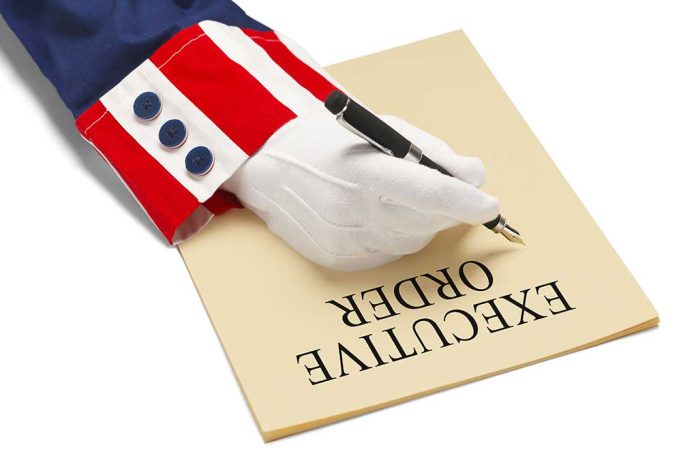
(LibertyInsider.org) – It is common to hear about a president issuing an executive order, but many people don’t understand what that means. Is it a law? If so, how can the president make the order when he is not part of the legislative branch of the government?
Executive orders are a special power of the president that comes from the US Constitution. Throughout history, leaders have used them to make special proclamations that have made substantial historical impacts.
Executive Order Defined
The American Bar Association defines an executive order as a directive from the president. Each order has a number and becomes an official government document. This directive is similar to a law and has the same power, but it is not a law.
The president must explain within the order where the power to make such a directive lies. It can come from existing law or the US Constitution. The document must also list the total cost of carrying it out.
Congress doesn’t have to approve the order, and it cannot veto it. Only the president can overturn an executive order, and some presidents have done so to orders made by previous presidents.
Surprising Executive Orders
It is a common misunderstanding that executive orders do not have much impact. Many people think they are similar to campaign promises and won’t produce much of a result. However, there have been many orders that have delivered significant results or impacts on history.
Executive Order 8807
On June 28, 1941, President Roosevelt issued this executive order to establish the Office of Scientific Research and Development (OSRD). The goal was to develop an atomic bomb before Germany did. A unique aspect of this order was that the OSRD was under complete control of the president.
Eventually, this order gave way to the creation of the Manhattan Engineering District, which set up uranium mining sites around the country. At one such site, the atomic bomb was created and tested.
Executive Order 7034
Also known as the New Deal, this order helped bring the country back after the Great Depression. Signed by President Roosevelt on April 8, 1935, the New Deal helped to create jobs and infrastructure. It established the Works Progress Administration, which eventually closed after reaching its goal of almost full employment.
Executive Order 11130
This executive order came from President Johnson only days after he took office following the assassination of President John F. Kennedy. It created the Warren Commission, which investigated the assassination. The now-famous Warren Commission Report determined Lee Harvey Oswald’s actions were only his and not part of a bigger scheme.
Executive orders are unique in that they give the president powers similar to those of Congress. While they are not laws, they often act in the same way and can have a significant impact on the country.
Copyright 2023, LibertyInsider.org














